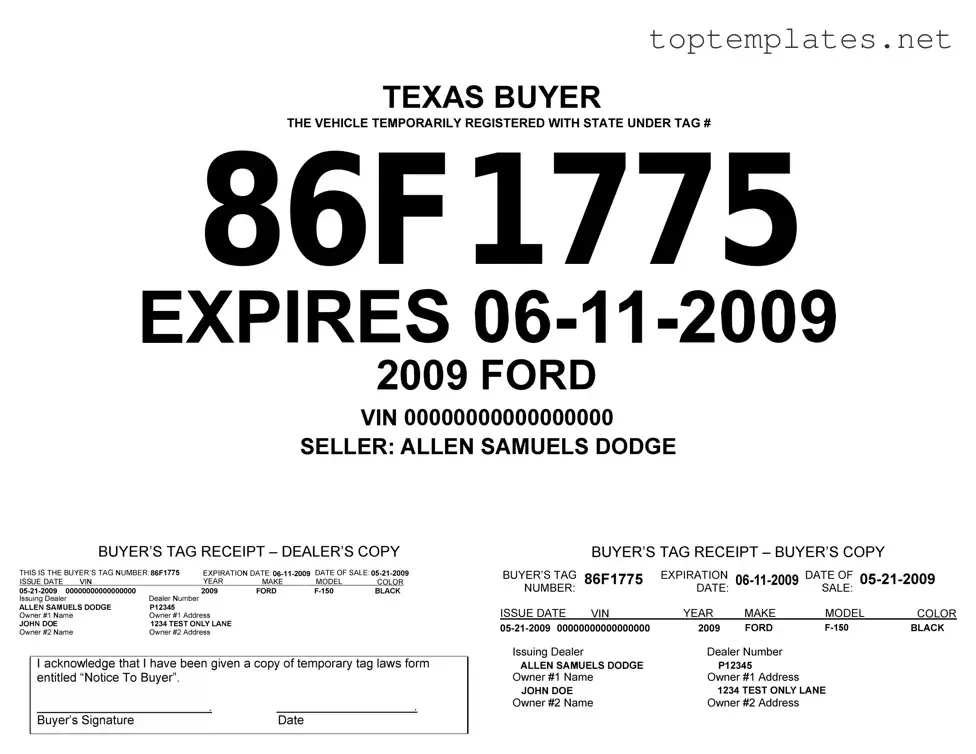What is a Texas Temporary Tag?
A Texas Temporary Tag, also known as a temporary license plate, is issued by the Texas Department of Motor Vehicles. It serves as a temporary registration for drivers to use while waiting for their permanent vehicle registration. This tag allows for the legal operation of a vehicle on Texas roads for up to 30 or 60 days, depending on the type issued.
How can I obtain a Texas Temporary Tag?
To obtain a Texas Temporary Tag, the vehicle owner must apply through a licensed vehicle dealer in Texas at the time of purchase, or through the county tax assessor-collector's office directly if they are dealing with private sales or out-of-state vehicles. The applicant must provide necessary documentation including proof of insurance, vehicle identification number (VIN), and applicable fees.
What documents are required to apply for a Texas Temporary Tag?
Required documents typically include a valid photo ID, proof of car insurance, vehicle title or sales document with the VIN, and payment for the temporary tag fee. The specific requirements might vary slightly depending on the issuance location (dealer or tax office).
Is there a fee for a Texas Temporary Tag?
Yes, there is a nominal fee associated with obtaining a Texas Temporary Tag. The fee may vary slightly but generally includes a set amount for the tag itself and possibly an additional transaction fee. It's advisable to check with the local issuing authority for the exact costs.
How long is a Texas Temporary Tag valid?
Temporary tags in Texas are valid for either 30 or 60 days, based on the type of tag issued. The expiration date will be clearly printed on the tag itself. It is important to finalize your vehicle's registration before this temporary period expires to avoid legal issues.
Can I renew my Texas Temporary Tag if it expires?
Typically, Texas Temporary Tags cannot be renewed. If the temporary tag expires and the vehicle has not yet been registered, the vehicle owner might need to apply for a new temporary tag and is advised to contact the issuing authority for guidance.
What happens if I drive with an expired Texas Temporary Tag?
Driving with an expired temporary tag is illegal and considered the same as driving without registration. This can result in ticketing, fines, and possibly the impoundment of the vehicle. It's crucial to ensure that the vehicle is properly registered before the temporary tag expires.
Are Texas Temporary Tags valid in other states?
Yes, Texas Temporary Tags are typically recognized and valid in other states due to interstate agreements. However, it is advisable for drivers to check the specific regulations of any state they plan to drive in, as requirements and recognition can vary.

